
Nostalgia, Hope and The Return of Cape Cod Baseball
Cape Cod Life / June 2021 / Recreation & Activities
Writer: Evan Senie
Nostalgia, Hope and The Return of Cape Cod Baseball

Cape Cod Life / June 2021 / Recreation & Activities
Writer: Evan Senie
The Cape Cod Baseball League is planning to return this summer, after COVID-19 scuttled the 2020 season. The showcase league, which draws top collegiate players who hope to improve their chances in the MLB draft, lasts from the late-sunset nights of June until August, when the impending chill of fall is already giving some evenings a bundled-up playoff atmosphere. The players come from all over the country and stay with host families on Cape Cod. It’s a wood bat league, which is an adjustment for the players, who use metal bats from little league all the way through college (despite the serious danger). For many players it’s their first chance to prove themselves with the bats they’d be using in the pros. Last season’s cancellation undoubtedly made it harder for certain players to improve their draft standing, and robbed scouts of the opportunity to stand behind home plate in towns like Brewster, Hyannis, and Wareham, trying to determine whose skills will translate to the next level.

When Cape League baseball does indeed return this summer, it won’t just be the players and coaches who are excited. The league is an important part of the culture of the Cape, and it was one of many things sacrificed to the pandemic. Resuming games on Cape Cod is a careful balancing act, as the population skews older and therefore more vulnerable to serious complications from the virus. For me, it’s personal, as my parents and 97 year-old grandfather live on the Cape. The return of the Cape League, as our country tries to come back from the devastation of COVID-19, represents what is best about Cape Cod, and maybe also what’s best about baseball. The simplicity of the league and the stripped-down passion for the game is truer to the heart of the sport than any other league I know of, even the major leagues.
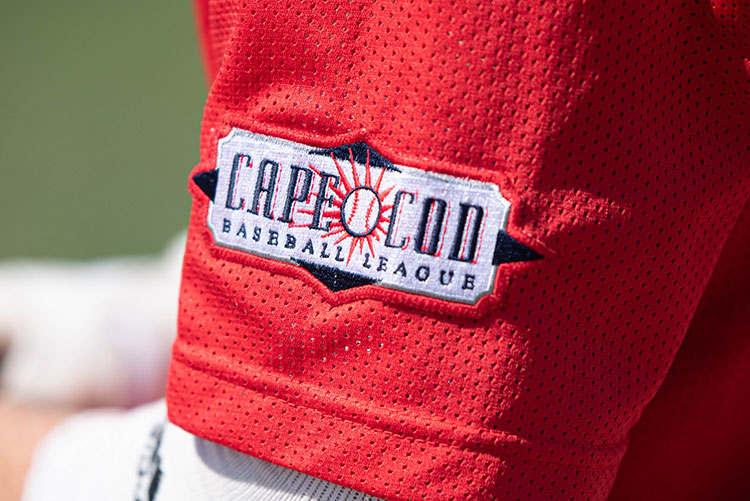
Of course, on talent alone there’s no comparison. Major league teams are miles better than the scrappy Cape Cod league outfits. Only the best from the Cape League make it to the professional level, and even fewer make it to the majors. That said, many current MLB players, including Aaron Judge, Josh Donaldson, and Buster Posey, spent a summer riding old school buses to games played at high school fields from Bourne to Orleans, and mentored young kids at the camps run by the teams. It’s here where you can watch future stars of the league, people who will win home run derbies, MVP awards, and World Series, before they become celebrities.
Back in high school I lived with my grandparents and interned for a couple of these teams. I ran a radar-gun stand where fans got to see how fast they could pitch, and worked at the camps alongside players. It was there that I sold 50-50 raffle tickets, watched middle-aged men pay dollar after dollar to see if they could still throw 60-miles-per-hour, and sat on a bucket next to Buster Posey, who had been drafted by the Angels in the 50th round, listening as he thought aloud about whether to sign or go back to school. Back then he was a shortstop, and neither of us knew that two years later he’d be drafted by the San Francisco Giants fifth overall as a catcher and receive what was at the time the biggest bonus in MLB draft history. I got to work alongside players I now watch on TV, and developed the type of nostalgia for the Cape League that is at the core of why baseball is America’s pastime.

Photo by Meghan Murphy
This is not to say that there’s anything particularly wrong with Major League Baseball. I grew up near Boston, a Sox fan with parents who got married during the 1986 World Series, one rooting for the Sox and one cheering for the Mets. I remember the 2003 ALCS, when in Game Seven, Manager Grady Little left starting pitcher Pedro Martinez, our ace, out there on the mound too long, and the Yankees broke our hearts once again. I remember the joke people told in school for weeks: “Why can’t Grady Little mow his lawn? Because he can’t pull a starter.” Then, the next year, down three games to none to the Yankees in the ALCS, the Sox stormed back, and swept the Cardinals in the World Series to break an 86-year-curse, the best sports season I’ll ever experience.
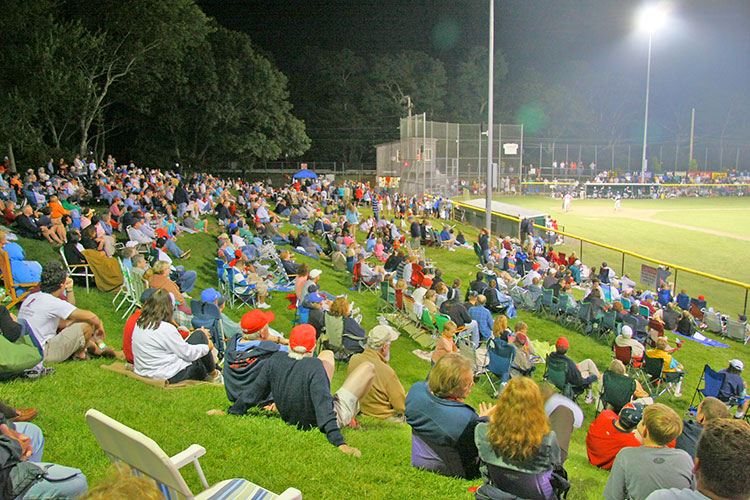
When I was a kid staying with my grandfather in the summer, I used to walk to the end of his driveway and collect The Boston Globe, excited to see who won last night’s game, only to find, most mornings, that the results were incomplete, since The Globe’s print deadline often occurred around the seventh inning. In college I would watch the playoffs in the dorm common room with my buddy, tell him what pitch was coming and where it would go. Backdoor slider, high fastball, cutter inside, fastball away. Major League Baseball is intricate, and exciting, and fun.
It’s also expensive. Fernando Tatis Jr., shortstop for the San Diego Padres, recently signed a 340 million dollar contract extension. It was a reminder that Major League Baseball has become, by necessity, a flashy, high octane product as it has carved out a space among more action-packed sports like football and basketball. It wasn’t always like this. My dad tells a story about how, when he was a kid, the New York Mets became a team, and they were terrible. Laughably bad, they needed to do something to drum up fan support. They started sending players to little league banquets. During one of those attempts to expand their base, Ed Kranepool and Al Jackson ended up taking the train to Westport, Connecticut, and ate dinner in my dad’s house alongside his entire little league team. Players worked winter jobs, and there used to be more guys with a funky delivery and an eighty-three mile per hour fastball. Today MLB pitchers average over six-feet-two-inches-tall and throw 93-mile-per-hour fastballs. It used to be a little easier to imagine yourself out there at second base, choking up on the bat and slapping a single to the opposite field. Now the players seem larger than life, driving their Bentleys and Ferraris, signing contracts for hundreds of millions of dollars, showing up in commercials for Subway and dating popstars. If you want to go to a game at Fenway Park in Boston you’re lucky to pay $30 to sit way out in the bleachers, and that’s after paying $40 for parking and $13 for a hot dog and a beer.

In that way, the Cape League is a throwback. Admission is free, and when I worked there the suggested donation was two dollars. The league attracts all kinds of fans. In Hyannis, where I spent two of my three seasons with the Harbor Hawks (they were the Mets at the time), we’d get local folks who’d been attending games for 40 years. They’d sit on high school bleachers next to tourists who showed up as a family to see what it was all about, and kids who would smuggle alcohol up to the top row to sip with their friends. The farthest seat in the bleachers couldn’t have been more than 30 feet from third base. After the seventh inning, or whenever the PA guy (who announced like he had big league dreams of his own) got hungry, he’d announce dollar hot dogs for the rest of the game.
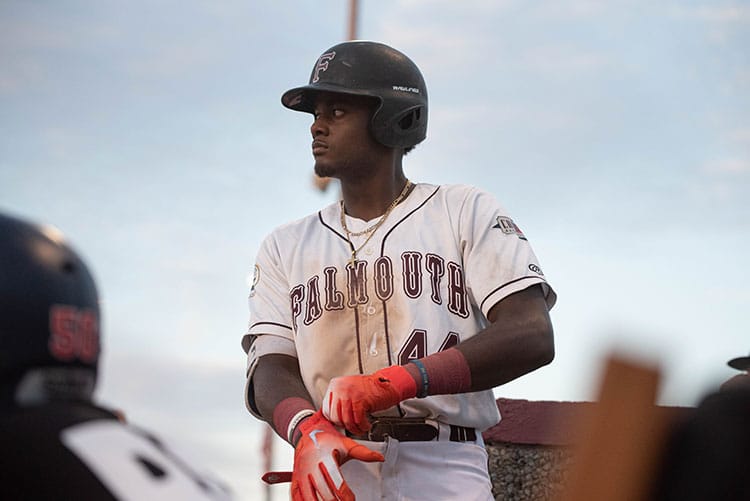
The Cape Cod League reminds you that baseball, at its core, is a bunch of people getting together. When I worked for Hyannis, a grade school teacher named Laurie Pfeifer was in charge of the interns. She and her husband Brad were always around, the kind of amiable people who remind you of the character of Cape Cod, that underneath the vacationland veneer is a fishing town full of folks who will drag the infield by hand, put sponsor signs up on the outfield fence, attach a hand-pump to a hose after a big rain and get enough of the water out of right field so that the ball doesn’t float when it lands. Next to the baseball diamond was another large field and sometimes during the games there would be pickup soccer happening simultaneously, families picnicking in the grass and kids laughing as they watched their not-as-fast-as-they-used-to-be dads run up and down the field.
This is where I spent my high school summers, living with my grandfather and riding a bike with no brakes, using my heels to slow down until I’d worn straight through my shoes. One summer, I worked at a country club in the morning, shoveled seaweed off the beach with a pitchfork, ran the flag up the pole and then stepped out onto the roof itself, sat there to watch the sunrise over the water in Osterville. I’d wait until I heard the sound of my boss’ Jeep, hustle down and be sweeping the floor by the time he got inside. I used to wander onto the fancy golf course between jobs, nap under a tree at the edge of the green, wake up to the wealthy members in their fancy golf attire staring down at me.
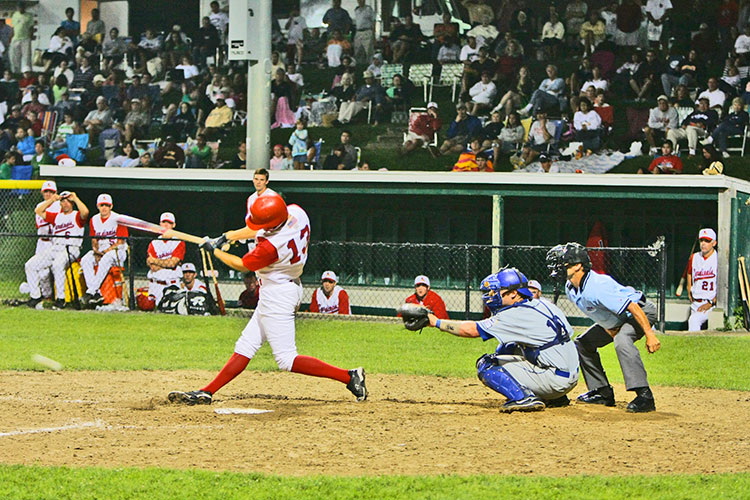
Of course, nostalgia is a funny thing. It can make you forget about the hard parts, like watching my grandma’s Alzheimer’s progress until she didn’t know who I was, who my grandfather was, until the only thing she remembered were songs from 50 years ago that she would hum while she sat in her green chair in the living room. Or how I got so tired working the two jobs that I fell asleep behind the wheel, only to be startled awake by the rumble strips. It’s easier to remember the funny stories, like the next day at work when I poured scalding coffee into a little plastic cup that melted in my hands, a lesson that was etched in my psyche as I accepted the styrofoam one handed to me by my incredulous coworker.
At its best maybe nostalgia doesn’t have to be simply an escape from the real world, doesn’t have to be denial. 2020 was a terrible year. It started with unprecedented fires in Australia, and ended with almost two million people dead from COVID-19. In between, we had unrest sparked by the ugly truth of systemic racism, more terrible fires, (this time here in the US), and an election that has strained our ability as a nation to share common facts, to live in the same reality. Even the baseball season was a shell of its normal self. Sixty games in the Major Leagues, the Cape League completely canceled.
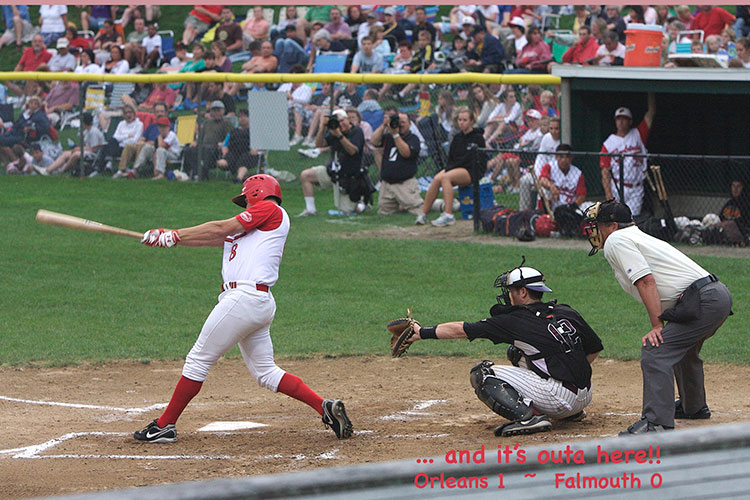
IT’S OUTTA HERE!
I’ve photographed guys on the Chatham and Orleans teams before. On this night I went to Chatham first for photos. By the time I got to Orleans to catch Steve Selsky, from Long Beach State if I remember correctly—he was a center-fielder with a great arm and powerful hit—I had to park in a small lot over the left field fence. I was given a head’s up about balls, but I didn’t care because I was hurrying to get a picture of Steve at bat. I ended up behind the backstop with a pro scout for Atlanta. No surprise that Steve hit a homerun, as I watched the ball fly over the left field fence, I said to the scout, “My car is one of about twenty parked there.” I continued to take photos walking counter clockwise down the right field line, and then headed home past center field to the left parking lot. People who were watching the game were waiting to see WHOSE CAR! The next night I delivered a card for Steve to the locker room with the photo of his homerun swing and included a photo of my Tahoe window with a note, “Its already been replaced.” Steve later made it to the Red Sox, but after a season or so was released. ~ Norm Kenneally Contributing Photographer
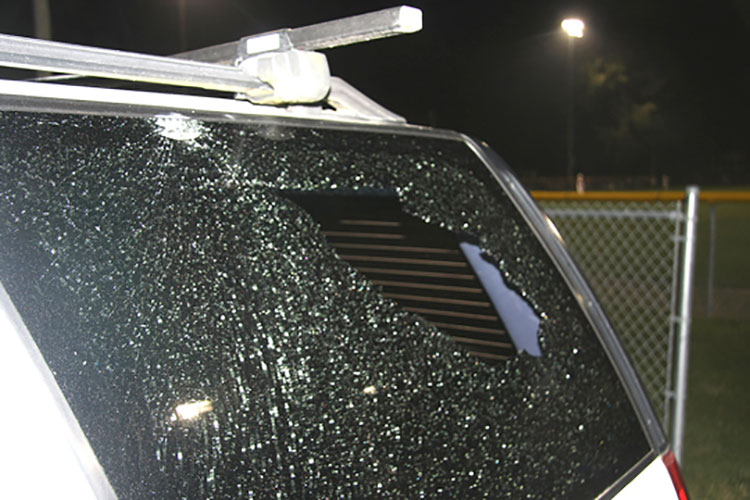
It’s true that my first summer on Cape Cod, when I went to the park, my grandma was back at home with my grandpa, dying a slow death from Alzheimer’s, and there was nothing we could do about it. I spent hundreds of hours at the field, running the radar gun stand and handing out tickets. When a little kid would come up with their mom, head into the batting cage, throw five tosses so slowly against the pad hanging from the net that the gun wouldn’t register it, I would smile with encouragement as I made up a speed: 10 miles per hour, 12, 13, always ending on the fastest one. During the later innings I would stand down the first base line, hear the crack of the wooden bat, a far better sound than metal, watch a ball fly out to right field and disappear into the trees. Inevitably a group of little kids would go sprinting out there and come back 10 minutes later, one of them holding the slightly lopsided baseball over their head. When I came home at night the three of us would eat dinner, and my grandfather would ask me all about my day as my grandma sat at the head of the table, humming.
Nostalgia can make us complacent, can lead to disappointment, to detachment from the suffering around us. But nostalgia is also a type of hope, and as we come out of the darkest winter in recent memory, begin to look forward, we shouldn’t push it away. Just the other day I noticed the first bright green blades of grass peeking up through the dirt. The vaccine rollout is progressing, the Major League season is in full swing, and I’m starting to think there might be a time this summer when my girlfriend and I get to drive across the country, from our home in Colorado, see my folks for the first time in far too long, and head over to Hyannis to catch a game. I imagine we’ll be wearing masks, and social distancing, but the hot dogs will be a dollar and the tickets free, and we’ll watch some college kid, who might never play professionally but who for now is living the dream, walk up to home plate with his wooden bat, tap it against his cleats, and step into the box.
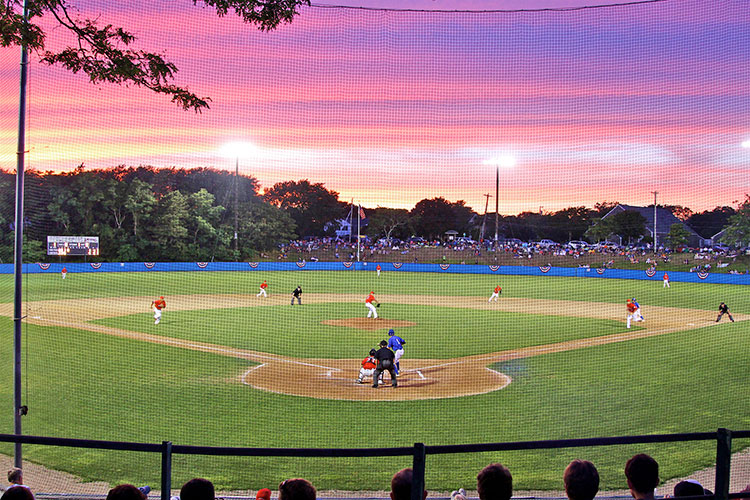
Evan Senie is a freelance journalist and creative nonfiction writer with an MFA from Colorado State University. Find him online at evansenie.com



